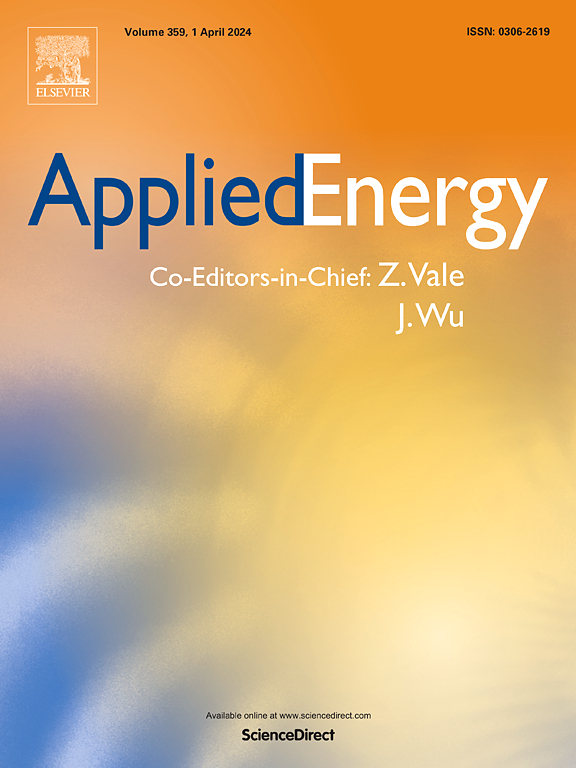Electromechanical modeling and experimental validation of an origami-structured triboelectric vibration energy harvester
IF 10.1
1区 工程技术
Q1 ENERGY & FUELS
引用次数: 0
Abstract
This study presents a novel electromechanical model and its experimental validation for an origami-structured triboelectric energy harvester (OTEH) designed to scavenge kinetic energy from vibration. OTEHs are recognized for their enhanced electrical output due to increased contact areas from stacked structures, but their electromechanical modeling remains largely unexplored due to geometric complexity. Furthermore, few studies have investigated the use of OTEHs for harvesting vibration energy. To address these gaps, we developed an electromechanical model specifically tailored for vibration energy harvesting using OTEHs. The model integrates an electrical model for triangular non-parallel contact surfaces with a lumped-parameter mechanical model, incorporating origami geometric parameters for broad applicability. We experimentally validated the model using a bellow-origami-structured triboelectric energy harvester (BOTEH) designed for vibration energy harvesting. Benefiting from axial elasticity and a guiding rod, the BOTEH structure can be excited by harmonic base vibration, enabling a systematic investigation of its vibration-energy-harvesting potential. The model, validated through time-domain and frequency-domain voltage and displacement responses under various vibratory conditions, accurately predicts the BOTEH's dynamic behavior. Additionally, under base forcing vibration, the BOTEH demonstrated practical utility by triggering an Internet-of-Things (IoT) temperature sensor and illuminating 24 LEDs, achieving a maximum output power of 119 μW at 6.6 Hz and 0.8 g with an 80 MΩ external resistor.
求助全文
约1分钟内获得全文
求助全文
来源期刊

Applied Energy
工程技术-工程:化工
CiteScore
21.20
自引率
10.70%
发文量
1830
审稿时长
41 days
期刊介绍:
Applied Energy serves as a platform for sharing innovations, research, development, and demonstrations in energy conversion, conservation, and sustainable energy systems. The journal covers topics such as optimal energy resource use, environmental pollutant mitigation, and energy process analysis. It welcomes original papers, review articles, technical notes, and letters to the editor. Authors are encouraged to submit manuscripts that bridge the gap between research, development, and implementation. The journal addresses a wide spectrum of topics, including fossil and renewable energy technologies, energy economics, and environmental impacts. Applied Energy also explores modeling and forecasting, conservation strategies, and the social and economic implications of energy policies, including climate change mitigation. It is complemented by the open-access journal Advances in Applied Energy.
 求助内容:
求助内容: 应助结果提醒方式:
应助结果提醒方式:


